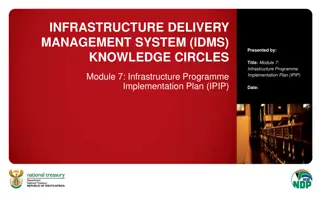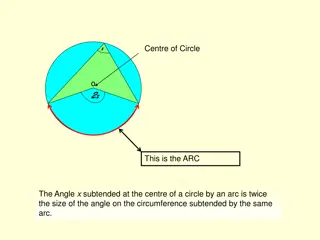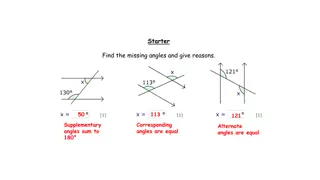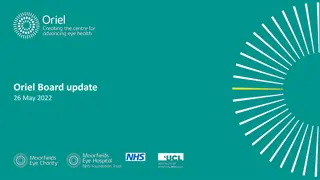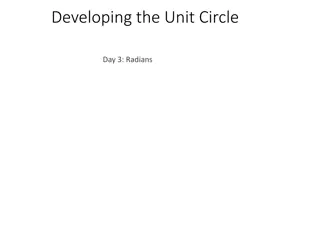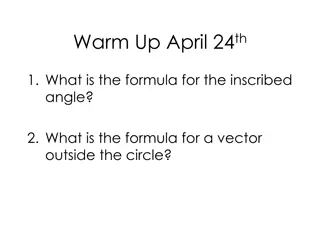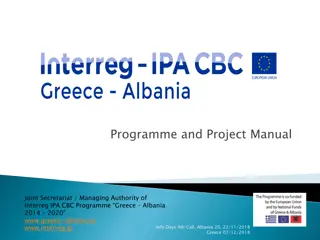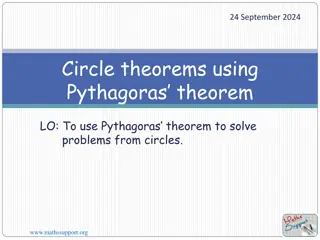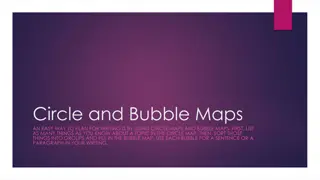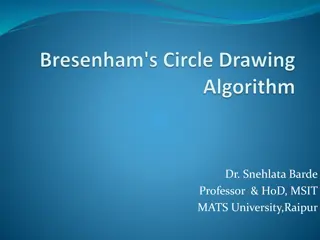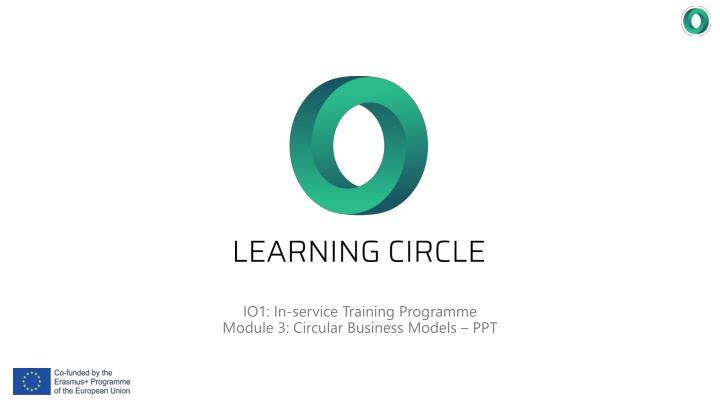
Circular Business Models and Their Environmental Impact
Explore the key characteristics of Circular Business Models (CBM) and their environmental impact, covering topics such as Life Cycle Analysis, water management, the 4 R's of waste, methods to transform traditional business models, and the importance of transitioning to a more efficient and circular economy.
Download Presentation

Please find below an Image/Link to download the presentation.
The content on the website is provided AS IS for your information and personal use only. It may not be sold, licensed, or shared on other websites without obtaining consent from the author. If you encounter any issues during the download, it is possible that the publisher has removed the file from their server.
You are allowed to download the files provided on this website for personal or commercial use, subject to the condition that they are used lawfully. All files are the property of their respective owners.
The content on the website is provided AS IS for your information and personal use only. It may not be sold, licensed, or shared on other websites without obtaining consent from the author.
E N D
Presentation Transcript
IO1: In-service Training Programme Module 3: Circular Business Models PPT
Module 3: Contents Definition and key characteristics of the Circular Business Model. 1 Life Cycle Analysis, the Water management and reuse and the 4 R s of waste: Reduce, Reuse, Recycle, Rethink. 2 Five Methods to Transform traditional business model to more Circular Ways which include: Product as a service, Resource Recovery, Sharing Platforms, Circular Supplies and Product Life Extension. 3
OBJECTIVES UNDERSTAND WORK ASK YOURSELF The Key characteristics of CBM and their environmental impact. Work on real case studies. Ask yourself which competencies for CBM you have The five methods of CBM.
Circular Economy and How Society Can Re-Think Progress
CORE VALUES Circular business models represent fundamentally different ways of producing and consuming goods and services. They can power the transition towards a greater useful resource efficient and circular economy, and, in doing so, considerably lessen the environmental stress resulting from economic activity. Present Use Circular business models use already existing materials and products as inputs, and therefore, their footprint tends to be considerably smaller than traditional business models. The environmental outcomes of circular business models also depend on their market penetration. They represent the key activities required to transition to a more efficient and circular economy. Circular business models serve to reduce the extraction and use of natural resources and the generation of industrial and consumer wastes. environmental
Life Cycle Analysis and Water Management The Circular Water Managements provides numerous opportunities for doing so. Water is obtained by industries from groundwater, surface water, and aquifers. Afterwards, they change water and bring it to the industries' standards to process it and produce their products. Therefore, after the use for production, the wastewater is directly disposed of or recycled after the treatment. We can use LCA to complement the circular economy in three practical steps: Test the assumptions of the circular economy business models. Recognize the limitations of the circular model and explore new, alternative approaches. Set objectives and continuously improve the circularity for practical implementation at the business level.
The 4 Rs of waste: Reduce, Reuse, Recycle, Rethink The Circular Business Model fundamental principles are based on minimising waste through, Reduce, Reuse, Recycle and Re-think. Any improvements the companies can make to reduce their waste or find productive or profitable ways to use the waste already is described as circular. The aim is: Reduce, Reuse, Rethink. Recycle and
Five Methods to Transform from traditional business model to more Circular Ways The Circular Business Model has five methods developed by Accenture to operate in more circular ways: 1. Product as a service. 2. Sharing Platforms. 3. Resource Recovery. 4. Circular Supplies. 5. Product Life Extension.
Product as a service The Product as a Service model is one of the most fundamental concepts for a circular business examples are car rental companies and print shops. The Product as a Service business model provides an alternative to the established buy and own approach. This model essentially allows customers to purchase a service rather than buying the product itself. model. Some
Sharing Platforms The Sharing Platforms are ...a service compensation model in which the owner sells access to underutilized assets to subsequent customers. responsible for maintenance and service quality. Vehicle ride sharing. Short term accommodation rental. Available labour and expertise. Tools and equipment. Excess food supplies. Owners are
Resource Recovery The Resource Recovery business model can be described as the use of technological innovations and developments for recovery and reuse resources . Downcycling: like recycling, entails the conversion of waste into secondary raw materials. The primary difference is that the recovered materials are of lower quality which can only be used as an input in a limited number of applications. For instance, in the context of paper and cardboard recycling, each additional loop reduces the length of cellulose fibres. As a result, recovered paper cannot always be used for the same applications that virgin paper can. Upcycling: Upcycling is the opposite of downcycling. It entails converting waste into secondary raw materials, which are then used in relatively high-value applications. Freitag, a German clothing manufacturer, provides an example by producing bags made from truck tarps, car seat belts, and bicycle inner tubes. Industrial symbiosis: also known as closed loop recycling, is the use of production by-products from one firm as production inputs by another.
Circular Supplies. The Circular Supplies Model eliminates virgin-resource-derived materials and replaces them with bio-based, renewable, or recovered materials. The Circular Supplies business model is characterized as resource inputs that are totally renewable, recyclable, or biodegradable and serve as feedstock (or raw materials) for a separate manufacturing process.
Product Life Extension When we buy a product, most of us assume it is built to last as long as possible. For the most part, that assumption is true. Although some companies may operate based on planned obsolescence, deliberately products to fail after a certain period of time, the majority do not want their products to stop working sooner than their customers would expect. The Product Life Extension business model focuses on lengthening the time that a product can be used before disposing of it. This Model purpose is to save, remanufacture, improve, or remarket a product, and as a result to not throw away anything. designing their maintain, repair,
Case Studies Napapijri company in order to reduce the waste of the waterproofing jackets, which are made by different materials which can not be recycled, decided to make their design manufacture it with one polymer. Circular Series: The production of simpler and
Case Studies Gerrard Street: The company has created the idea headphones. Gerrard Street is the first company to offer a subscription service for its modular headphones. of renting
Case Studies De Clique: De Clique makes new products from urban organic waste streams. The waste is collected with electric vehicles from businesses and includes coffee grounds, orange peels and other Afterwards, the food waste will be sold by The Clique to third party innovators manufacturers, who transform them into new products ingredients, cosmetics, biomaterials . food waste. and product like food and
Questions to discuss How we can use the 4R s of waste in Circular Business Model? Can you share any examples of companies/brands or local businesses that they use the CB model? What is the most difficult method for the transform from traditional business to the CB? Can you share any new ideas about how to make a business more circular?
"The European Commission's support for the production of this publication does not constitute an endorsement of the contents, which reflect the views only of the authors, and the Commission cannot be held responsible for any use which may be made of the information contained therein. Project Number: 2020-1-UK01-KA226-VET-094435

